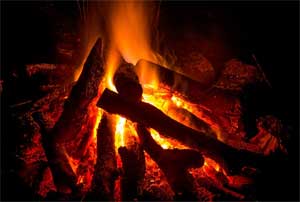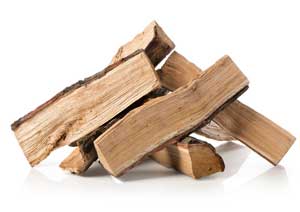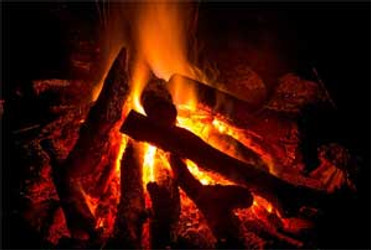Mastering the Art of Starting a Fire Pit
Posted by The Fire Pit Store on 15th Nov 2023
One of the essential factors to consider when starting a fire pit is choosing the perfect location. The location you select will greatly influence your overall fire pit experience and safety. To create a serene and inviting ambiance, it's crucial to find an ideal spot that complements your outdoor space and aligns with local regulations.
First and foremost, check with your local authorities or homeowner's association to ensure you adhere to any regulations regarding fire pit placement. Once you have the green light, consider the proximity of your fire pit to your house, trees, and other structures. It is recommended to position the fire pit at least 10-20 feet away from any combustible materials, including your home, fences, overhanging branches, or sheds.
In addition to safety considerations, think about the prevailing wind direction. You want to place your fire pit in a location where the smoke won't blow directly into your living area, irritating guests and causing discomfort. Observing the wind patterns in your outdoor area will help you determine the best spot.
Fire Pit Basics: Selecting the Right Materials and Tools
A fire pit offers a warm and cozy outdoor gathering space for friends and family, perfect for roasting marshmallows or enjoying the crackling flames. However, when it comes to starting a fire pit, selecting the right materials and tools is crucial for usability, safety, and longevity. In this guide, we will explore the essential aspects to consider when setting up your fire pit.
1. Choosing the Right Materials
When selecting materials for your fire pit, it's important to prioritize heat resistance and durability. Opt for fire-resistant materials such as stainless steel, or cast iron, or heat-resistant stones like granite or brick. These materials can withstand high temperatures and will ensure that your fire pit stands the test of time. Additionally, consider using fireproof sand or gravel as a base layer, providing extra insulation and preventing the growth of weeds or grass beneath the fire pit.
2. Essential Fire Pit Tools
Equipping yourself with the right tools ensures easier fire management and enhanced safety. Here are some essential fire pit tools:
- Fire Poker: A long, sturdy poker helps you adjust logs, stir the fire, or move burning debris safely.
- Tongs: Tongs with heat-resistant handles allow you to rearrange burning wood or add more fuel without risking burns.
- Ash Shovel: An ash shovel helps you remove and dispose of ash easily, keeping your fire pit clean and ready for the next use.
- Fireproof Gloves: Invest in a pair of fireproof gloves to protect your hands while handling hot tools or moving logs.
3. Safety Precautions
While enjoying the warmth of a fire pit, safety should always remain a top priority. Follow these safety precautions to ensure a worry-free experience:
- Keep a fire extinguisher or a bucket of sand nearby to extinguish any unexpected flames quickly.
- Position your fire pit in an open area, away from flammable objects or structures, such as trees, fences, or buildings.
- Always monitor the fire and never leave it unattended, especially if there are children present.
- Avoid using lighter fluids or any flammable liquids to start or revive the fire, as it can lead to uncontrollable flames.
Mastering the Flames: Building and Maintaining a Safe Fire
Building and maintaining a safe fire is essential when starting a fire pit. Here are some important guidelines to follow:

1. Choose a Safe Location
Prioritize safety when selecting the location for your fire pit. Choose an open area away from any structures, low branches, or flammable materials. It's crucial to keep a safe distance from your home or any flammable objects to prevent accidents. Additionally, ensure the ground is stable and clear of dry grass or leaves that could catch fire easily.

2. Use Proper Fuel and Kindling
Selecting the right fuel for your wood burning fire pit is important for safety and efficiency. Dry firewood that has been seasoned is the best choice, as it burns more easily and produces less smoke. Avoid using green, damp, or softwood, which can create excessive smoke and sparks. To start your fire, gather proper kindling such as newspaper, twigs, or small sticks, and place them at the base of the pit to ensure a good ignition.
3. Build the Fire Safely
When building the fire, start by stacking larger pieces of seasoned firewood in a crisscross pattern. This allows for proper air circulation and helps the fire burn evenly. Always remember to leave enough space between the logs to allow the flames to breathe. As the fire burns, gradually add more firewood to keep the flames going.
4. Monitor and Control the Fire
Once your fire is burning steadily, it's important to monitor and control the flames to maintain a safe environment. Never leave a fire unattended, especially if children or pets are around. Keep a bucket of water, a fire extinguisher, or sand nearby in case of emergencies. Regularly check the fire to ensure it doesn't grow too large or spread outside the fire pit. Remember to fully extinguish the fire before leaving the pit unattended.
Creating an Ambiance: Enhancing Your Fire Pit Experience
One of the joys of owning a fire pit is the ability to create a warm and inviting ambiance for gatherings and relaxation. With a few simple additions and considerations, you can take your fire pit experience to the next level.
1. Lighting: Choosing the right lighting can make all the difference in creating a captivating atmosphere. Opt for soft and subtle lighting options such as fairy lights or lanterns placed strategically around your fire pit area. These gentle illuminations will create a cozy and magical feel.
2. Seating: Comfortable seating is essential for maximizing the enjoyment of your fire pit. Consider investing in outdoor chairs or cushions that are designed for relaxation. Arrange the seating in a way that encourages conversation and interaction while keeping everyone warm and cozy.
3. Music: Music adds another layer of ambiance to your fire pit experience. Create a playlist of soothing tunes or choose a genre that matches the vibe you wish to create. Remember to keep the volume at a level that allows for conversation without overpowering the crackling sounds of the fire.
4. Outdoor Decor: The surrounding area of your fire pit can also contribute to the ambiance. Add elements of nature, such as potted plants or hanging greenery, to create a calming and organic environment. Additionally, consider incorporating decorative elements like sculptures or outdoor artwork to add a touch of personality and charm.

